Published on
Updated on
Contents:
Phomopsis Viticola
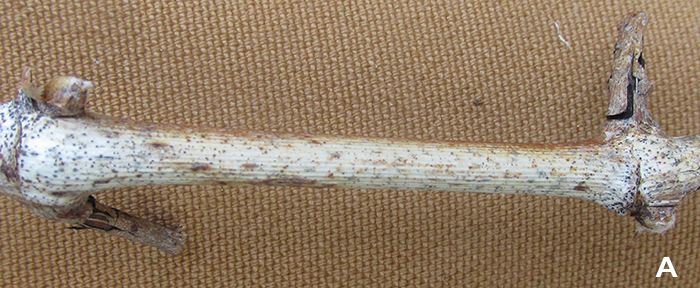
When you see a lot of bleached cane spurs in a vineyard that look like (A) above, there is need for concern. What you would like to see is a cane spur that is a nice rusty red/brown color (B). If you fail to remove bleached canes there is a very high likelihood that you will end up with spurs like (C and D). These spurs are the inoculum source of Phomopsis viticola (C and D). The spores of Phomopsis viticola infect new shoot growth (E). The lesions are elongated with the outside of the lesion raised-up (F). These lesions often appear on shoot nodes 1 to 3 but may appear on nodes 4-6. These lesions can also appear on leaf petioles. Spur buds on cordons that failed to burst bud and grow this season showed trunk disease symptomology (G and H). The infection of Phomopsis viticola can cause trunk disease.
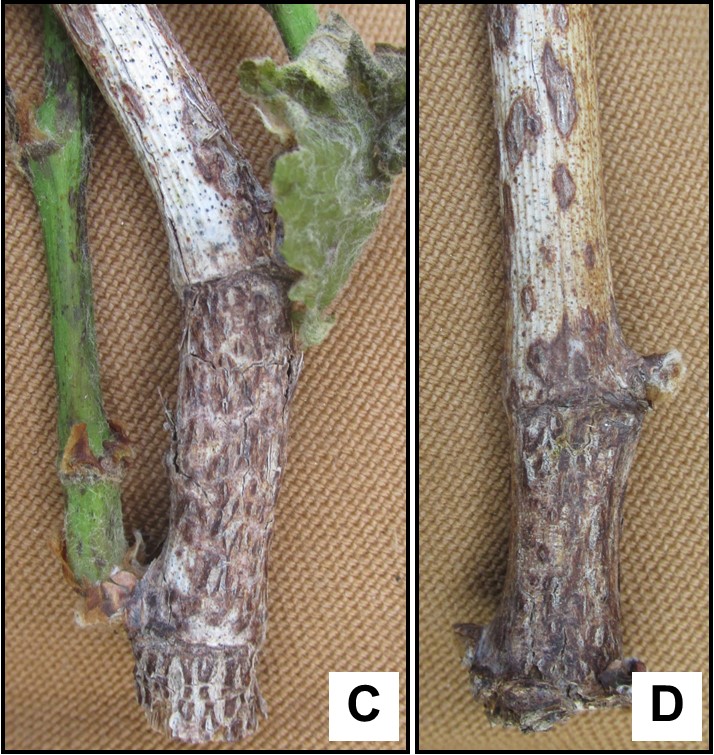

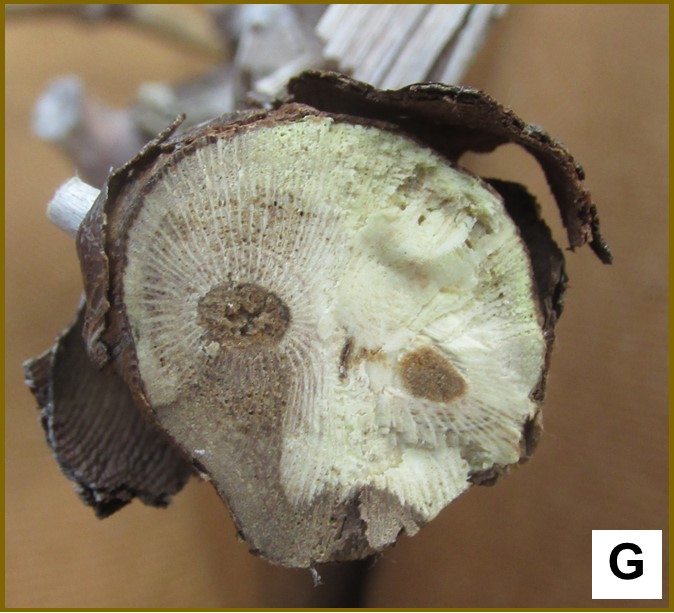

Anthracnose Elsinoe ampelina

Often you read or hear that Anthracnose is a southern disease that thrives in hot humid environments. However, Anthracnose can be active at 36°F. At low temperatures Anthracnose needs 12 hours or more of wet tissue to cause infection. Over the last three weeks, many areas of Missouri have experienced these long wetting periods that have been exacerbated by below normal air temperatures.
The symptomology caused by Anthracnose on grape shoots can sometimes be confused with Phomopsis viticola lesions. Anthracnose lesions are round in shape and sunken whereas Phomopsis lesions are elongated and have raised edges (Figure 1).
Anthracnose can be controlled with Abound, Endura, Flint, Inspire Super, Mettle, Pristine, Quadris Top, Revus Top, Sovran, TebuStar, Topsin M, and Vintage. Good control is also provided by Captan and mancozeb products.
A good indicator species to determine if Anthracose is active is the Sycamore tree Platanus. Although the Sycamore is susceptible to a different strain of Anthracnose, Apiognomonia veneta, the environmental conditions needed for infection are similar to grape Anthracnose Elsinoe ampelina. Sycamore trees in Missouri are almost completely void of leaves right now as the result of Anthracnose caused by Apiognomonia veneta (Figure 2).
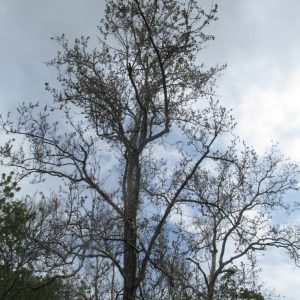
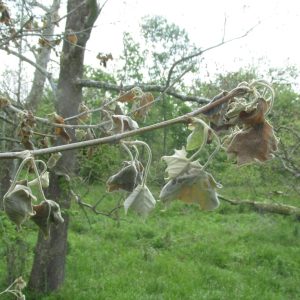
Figure 2. The Sycamore tree Platnus is a good indicator plant species to tell you that environmental conditions have been conducive for Anthracnose infections. Although Sycamore is attacked by a different Anthracnose pathogen Apiognomonia veneta than grape Anthracnose Elsinoe ampelina they have similar environmental requirements for infection. Photo credit: D. Volenberg 5.23.2020